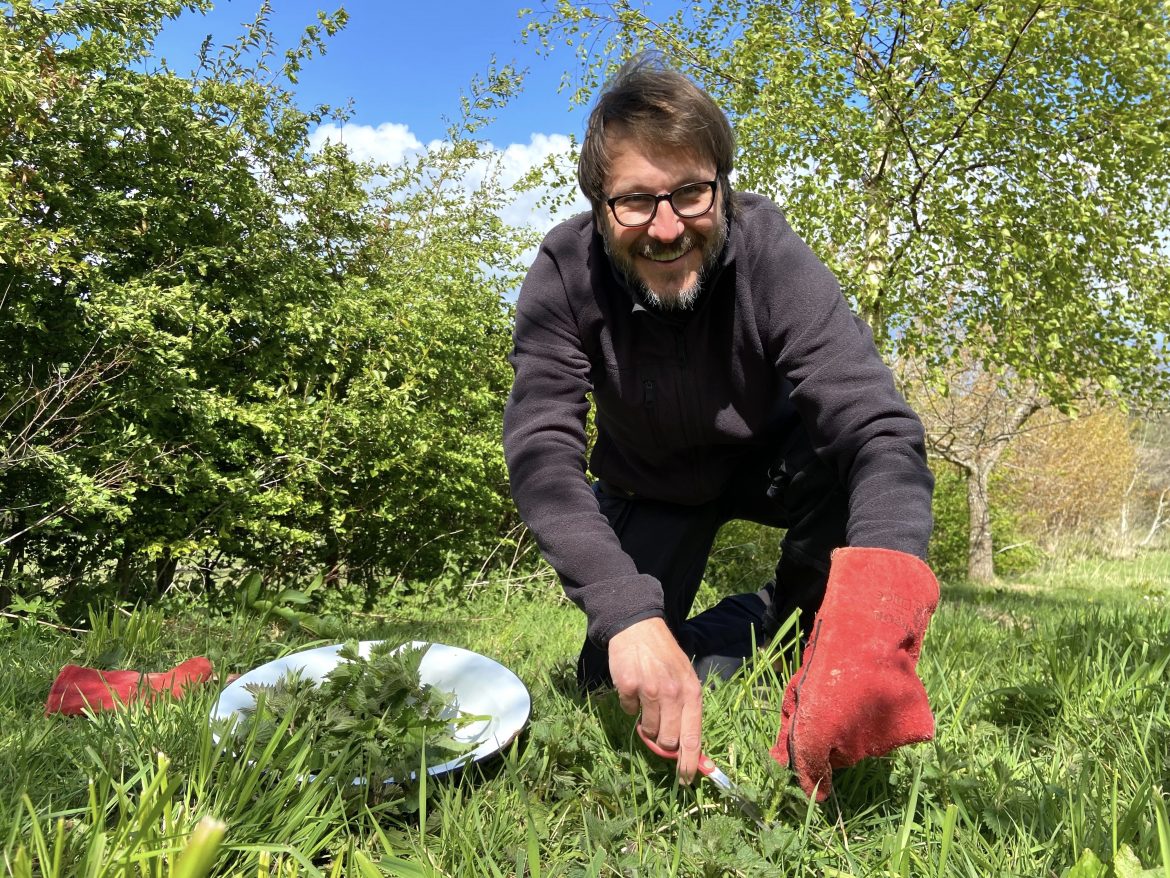Last year, we used the nettles in our field to make nettle soup (which was really tasty) and to make nettle tea (a natural fertiliser). This year, we’re still making batches of nettle tea, but we have experimented with a new use for them: nettle beer. This is an extremely sustainable form of brewing, and this recipe (if you have some basic equipment) cost us around £3 to make just under 4.5 litres.
Before hops were readily available in the 17th century, many plants were used to flavour ale, and nettles were one of them. So I did my research, and found numerous old recipes, which I mixed and matched, and added a few ‘modern’ twists to come up with our nettle beer. If you have access to nettles, this is a cheap (and dare I say it, healthy) drink, which many believe may help to alleviate rheumatic pain, gout and asthma.
We’ve shared our recipe below, and we also posted a step-by-step video of how we made the nettle beer on our Instagram channel (go the end of the post).
This is a small batch nettle beer recipe, which you should be able to make at home, and you will only need a fermentation vessel (with bung and airlock) – we purchased two glass demijohns and they are ideal for small batch brewing.
Ingredients
- 1kg nettle tops
- 4.5-5 litres water
- 1 lemon (juiced)
- 1 orange (juiced)
- 750g sugar
- 25g cream of tartar
- 1 sachet of ale yeast (11g)
- Dandelion flowers
Equipment used
- 11 litre stock pot
- Colander or sieve
- Muslin cloth
- 5 litre demijohn (with bung and airlock)
Step-by-step guide to making nettle beer
Collect one kilogram of nettle tops and give them a rinse. Nettles are very light, and collecting one kilogram will require a large bowl or container. Wear gloves to collect and wash the nettles to avoid getting stung.
Once you’ve got all your ingredients and you’re ready to start, bring the 4.5 litres of water to the boil in a stock pot and throw the nettle tops in. We used an 11 litre stock pot and it was just the right size. Boil hard for 15-20 minutes keeping the lid on to prevent the water from evaporating. Once boiled, carefully strain the liquid into another stock pot, using a sieve or muslin clothe to catch any bits.
Dispose of the nettles. We threw ours onto our compost heap.
In the clean pot, stir in the sugar, lemon and orange juice, and cream of tartar until everything has dissolved, and leave to cool to room temperature. You’ll notice that the darkish nettle liquid lightens when you add the lemon and orange juice, giving it a lovely, dark orange colour.
Once the liquid wort is at room temperature, pitch (the brewing term for sprinkling) the ale yeast over the surface of the nettle brew, and cover with a muslin cloth or a tea towel. Leave overnight. You should see a krausen form (a foamy layer) on top of the fermenting nettle beer, and it’ll emit a yeasty, sweet smell.
Now that the yeast has activated, take a demijohn and pour in the brew using a funnel. Top with a bung and airlock and leave to ferment for 6-7 days. Siphon or pour the beer into clean bottles, once the bubbles in the bung have slowed down (or stopped). We used glass swing clip top bottles. Do not fill the bottles to the top – give them a bit of breathing room. Leave them to chill and condition in the fridge for two weeks before drinking.
In the video below, we popped our first bottle after exactly two weeks and we describe what it was like. We’ve decided to condition them further for a few more weeks, and we’ll update the post on our findings.
Some final thoughts. We used ale yeast to be ‘traditional’, but having read about yeast in the last week, the next time we attempt making nettle beer, we are going to use lager yeast (which should make it less heavy as a taste) and we’ll add a bit of sugar before bottling to increase the fizz.
